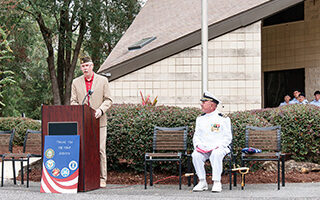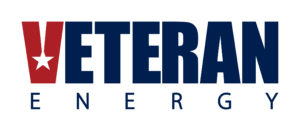
This week, in honor of Mental Health Awareness Month, we’re kicking off January with a guest blog on the subject of mental health from Veteran Energy friend and retired U.S. Air Force Lt. Col. Nick Shanks.
For veterans, military uniforms can sometimes divide us. Old rivalries, former rank, branch of service or the unit in which one served can work to keep us apart. I don’t like to draw attention to those rivalries.
So, on occasions when an old uniform might be appropriate, I prefer, instead, to wear my Veterans of Foreign Wars hat. It just identifies me as all of the rest: a veteran. I belong to a number of service groups for veterans and have a number of such hats. It’s these groups—more than anything else—that have helped me reconnect with the community. And this has been the case for many other veterans, too.
We veterans are a smaller group than you might think. Only 7.3 percent of our populace has ever served. And only four-tenths of one percent of America serves in the military today. Still, these numbers add up to millions who need the support of the country and its citizens.
The demographic of our veterans has changed since the days of the first world wars, Korea and Vietnam. Most of today’s veterans belong to the 4 million men and women who took part in the wars in the Middle East. And not unlike soldiers of our past wars, many of our newest veterans suffer from such conditions as post-traumatic stress disorder (PTSD) and traumatic brain injury (TBI). But they’re dealing with such conditions at an even higher rate.
Of the millions who have served in the Middle East, it’s believed at least 20 percent have suffered some form of concussive exposure or TBI. That adds up to as many as 800,000. The medical community calls this the signature wound of the 21st century.
To complicate matters, Veterans Affairs (VA) says PTSD–caused by trauma or moral injury–affects at least 25 percent of all combat veterans. They say this figure could be as high as 40 percent.
Together, PTSD and TBI are a formidable pairing working against the mental health of our American heroes.
Let me compare those numbers to another statistic. Often, charities and community groups advertise their choice to focus on and make veteran homelessness their priority issue. According to the VA and U.S. Department of Housing and Urban Development (HUD), homeless veteran numbers peaked 15 years ago at fewer than 50,000. And today, the number is at 39,000 or less. VA research indicates most of that number lives near major urban centers like New York and Los Angeles. Any homeless veteran is an issue, of course. But it’s an increasingly small number on the national scale.
Why emphasize TBI and PTSD? Supporting veterans is about having current knowledge on the most challenging veterans’ issues. Other issues such as POW/ MIA and veteran homelessness have been important and have had your support. But the modern veteran is different, and they need your support as well. The veteran community is younger. The millions of young men and women re-entering communities have a high rate of TBI and PTSD and related mental illness. And, for a number of reasons, they’re reluctant to address them.
I know many of you know the symbolism of 22 pushups. Veterans’ groups are getting that meme into social media and popular culture to draw attention to the fact that 22 veterans commit suicide daily as a result of untreated mental illness. What can you do about it?
Get involved. There are veteran centers across the nation, 1-800 crisis numbers and many VA facilities. I encourage you to learn the signs of these disorders. And when you notice something isn’t right, urge the veteran to seek assistance at one of these facilities. Better yet, offer him or her a ride or offer to go along.
Honoring our heroes is about doing our part to make sure these good men and women have the support they need when they need it. And I thank all of you who are, in some way or another, making that happen.


